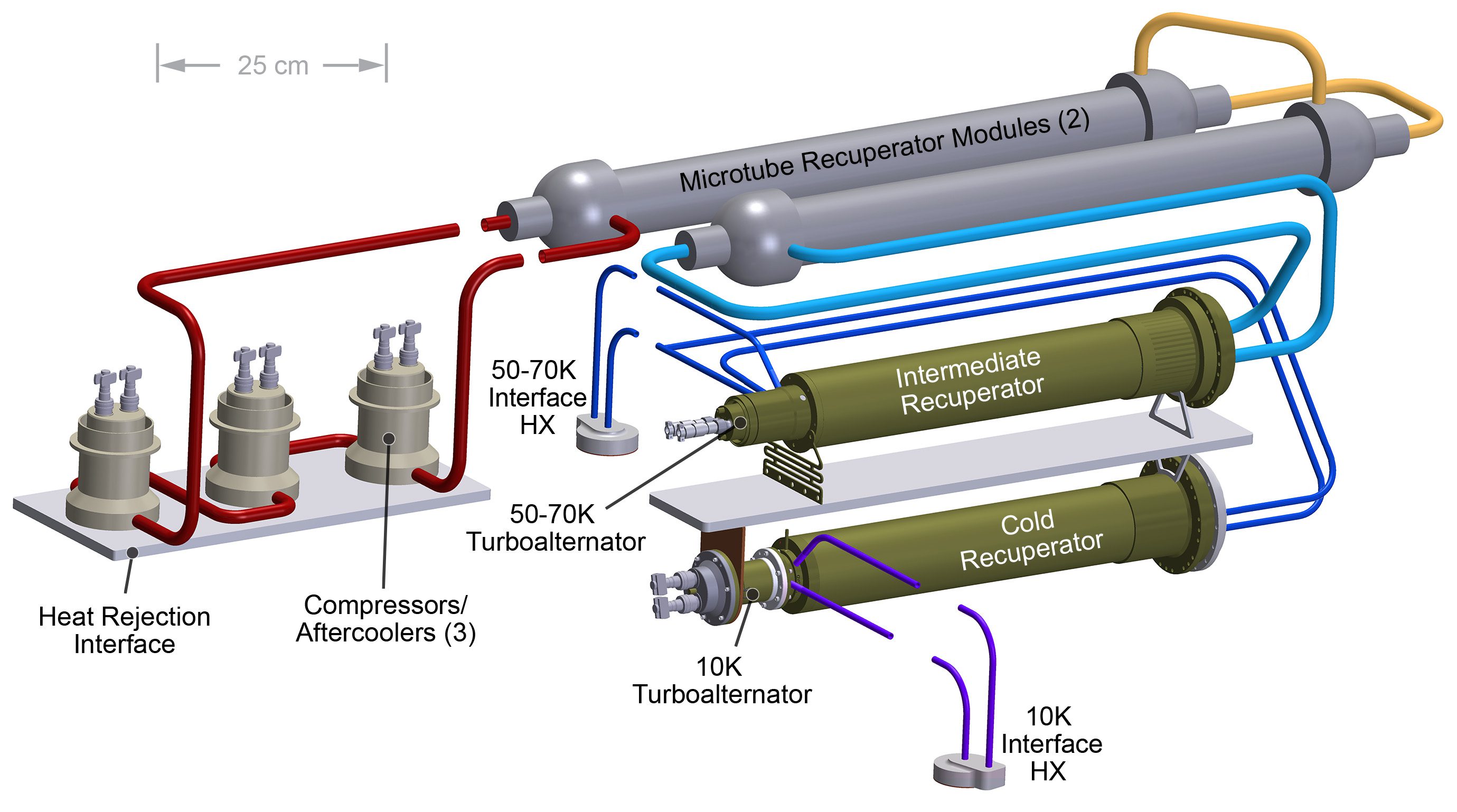Creare Awarded NASA Contract to Develop Low Vibration Cryocooler
Creare, a leading developer of cryogenic components and systems, has received a new contract from NASA. The SBIR Phase II award from NASA Shared Services Center will fund the further development of a 10 K multi-stage cryocooler with very low vibration.
Advanced space borne instruments require cooling at temperatures of 10 K and below. Potential missions utilizing such instruments include the Origin Space Telescope and the Superconducting Gravity Gradiometer. Cooling loads for these detectors will range from 50 mW to 500 mW at the primary load site, with additional loads at higher temperatures for other subsystems. Due to jitter requirements, a cryocooler with very low vibration is required for many missions. In addition, a multistage cooler, capable of providing refrigeration at more than one temperature simultaneously, can provide the greatest system efficiency with the lowest mass.
Leveraging Creare’s Cryogenic Systems Expertise
To address this need, Creare is working to develop and demonstrate a two stage turbo-Brayton cryocooler that provides refrigeration at 10 K, with additional cooling at 50 to 70 K. Creare is recognized as the world’s leading developer of turbo-Brayton cycle cryocoolers. Turbo-Brayton cryocoolers have a number of advantages that make them ideal for space applications. Because they utilize turbomachinery components running on gas bearings, the machines have ultra high reliability with no mechanical wear or fatigue. They also exhibit extremely low vibration and noise. Turbo-Brayton cryocoolers offer high efficiency and high power density.
The NASA-funded program leverages pre-existing hardware to enable a major breakthrough for cooling future low-temperature, space‑based detectors. During Phase I of the project, we optimized the performance of an existing cryocooler for a particular NASA mission class and measured its performance.
A conceptual design of an optimized 10 K cryocooler and its predicted performance are given in the accompanying figure. The estimated specific power at 10 K is less than 300 W/W when accounting for the Stage 1 load using Carnot scaling. This specific power is far less than any existing low-temperature cryocooler.
We are now embarking on the Phase II project. We will optimize key cryocooler components and demonstrate the performance of the advanced technology. We will also use test results to develop a design for a fully optimized, flight cryocooler for a particular NASA mission class.
